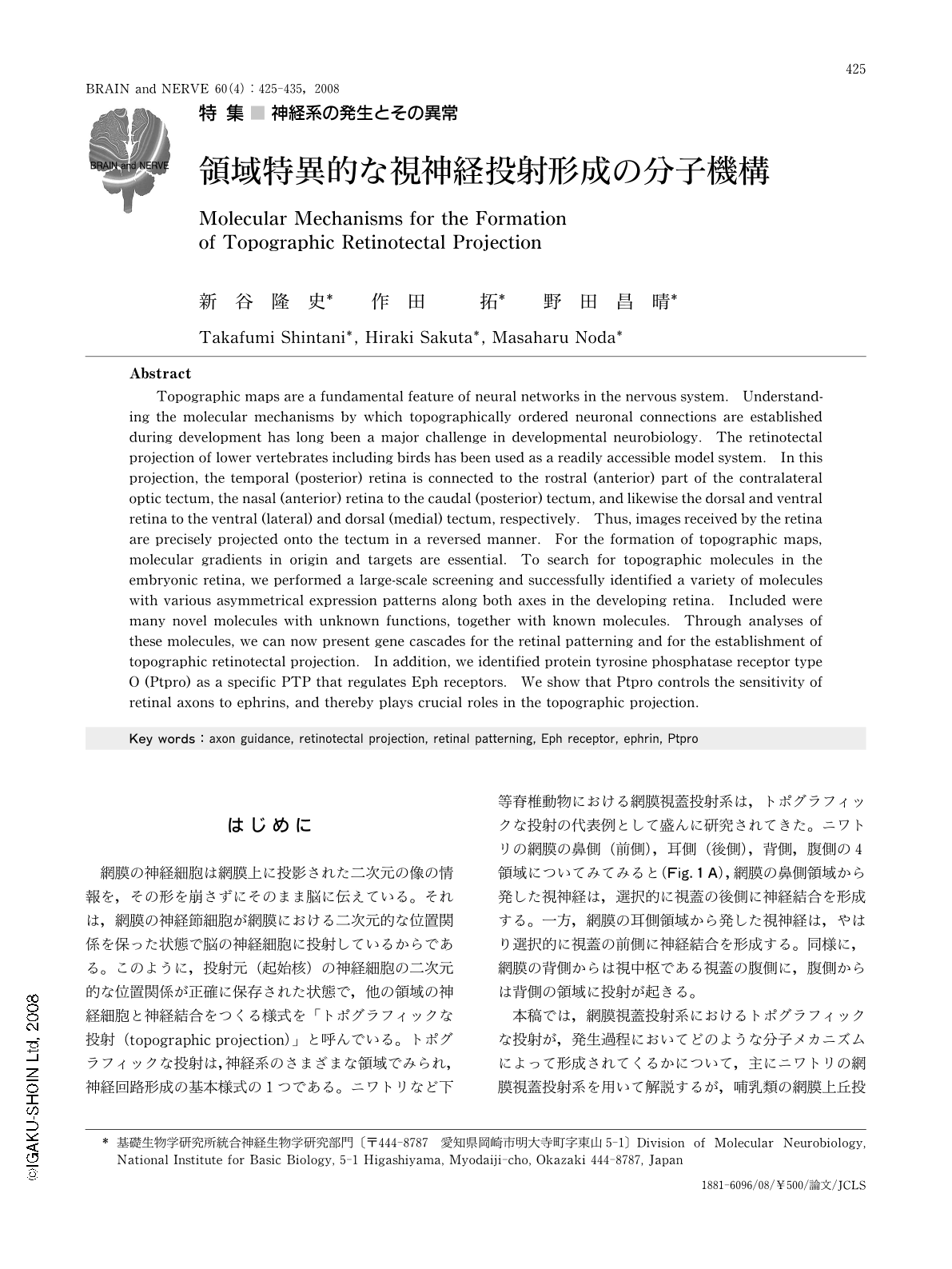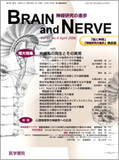Japanese
English
- 有料閲覧
- Abstract 文献概要
- 1ページ目 Look Inside
- 参考文献 Reference
はじめに
網膜の神経細胞は網膜上に投影された二次元の像の情報を,その形を崩さずにそのまま脳に伝えている。それは,網膜の神経節細胞が網膜における二次元的な位置関係を保った状態で脳の神経細胞に投射しているからである。このように,投射元(起始核)の神経細胞の二次元的な位置関係が正確に保存された状態で,他の領域の神経細胞と神経結合をつくる様式を「トポグラフィックな投射(topographic projection)」と呼んでいる。トポグラフィックな投射は,神経系のさまざまな領域でみられ,神経回路形成の基本様式の1つである。ニワトリなど下等脊椎動物における網膜視蓋投射系は,トポグラフィックな投射の代表例として盛んに研究されてきた。ニワトリの網膜の鼻側(前側),耳側(後側),背側,腹側の4領域についてみてみると(Fig.1A),網膜の鼻側領域から発した視神経は,選択的に視蓋の後側に神経結合を形成する。一方,網膜の耳側領域から発した視神経は,やはり選択的に視蓋の前側に神経結合を形成する。同様に,網膜の背側からは視中枢である視蓋の腹側に,腹側からは背側の領域に投射が起きる。
本稿では,網膜視蓋投射系におけるトポグラフィックな投射が,発生過程においてどのような分子メカニズムによって形成されてくるかについて,主にニワトリの網膜視蓋投射系を用いて解説するが,哺乳類の網膜上丘投射においても同様のメカニズムが働いている。
Abstract
Topographic maps are a fundamental feature of neural networks in the nervous system. Understanding the molecular mechanisms by which topographically ordered neuronal connections are established during development has long been a major challenge in developmental neurobiology. The retinotectal projection of lower vertebrates including birds has been used as a readily accessible model system. In this projection, the temporal (posterior) retina is connected to the rostral (anterior) part of the contralateral optic tectum, the nasal (anterior) retina to the caudal (posterior) tectum, and likewise the dorsal and ventral retina to the ventral (lateral) and dorsal (medial) tectum, respectively. Thus, images received by the retina are precisely projected onto the tectum in a reversed manner. For the formation of topographic maps, molecular gradients in origin and targets are essential. To search for topographic molecules in the embryonic retina, we performed a large-scale screening and successfully identified a variety of molecules with various asymmetrical expression patterns along both axes in the developing retina. Included were many novel molecules with unknown functions, together with known molecules. Through analyses of these molecules, we can now present gene cascades for the retinal patterning and for the establishment of topographic retinotectal projection. In addition, we identified protein tyrosine phosphatase receptor type O (Ptpro) as a specific PTP that regulates Eph receptors. We show that Ptpro controls the sensitivity of retinal axons to ephrins, and thereby plays crucial roles in the topographic projection.

Copyright © 2008, Igaku-Shoin Ltd. All rights reserved.


